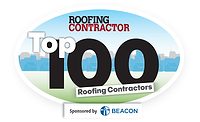Case Study
Savings by the Truckload
Georgia’s L.E. Schwartz & Sons uses asset management platform to keep rented roofing assets in their place

Image courtesy of Shutterstock
Regardless of the industry, many roofing companies struggle to maintain tight control of their owned and rented assets. Joe Hanson, vice president of construction operations for L.E. Schwartz & Son, Inc., recently cited an example illustrating the depth of their struggle.
“We rented a dump truck that stayed on a job site for months after the job was done,” recalled Hanson. “The rental company was certainly in no hurry to get it back, as we were paying for it the entire time.”
This was just one example of how much help L.E. Schwartz — a company engaged in commercial, residential, and industrial roofing, as well as roof maintenance and precision manufacturing — needed with their asset management process. Though they kept their eyes peeled for possible remedies, they weren’t quite sure what they were looking for. Hanson and others wondered if they could effectively address the issue through general process improvement, or if there was a technological approach that would fit the bill? And then serendipity made an appearance.
“Back in 2020, we completed a deal with a big distribution company called Beacon (Building Supply),” said Jason Perez, CEO of YARDZ, developer of one of the leading asset management platforms. “As it turns out, Beacon was the largest distributor of material to L.E. Schwartz, so Beacon introduced us to them. L.E. Schwartz wanted to see what YARDZ was capable of, so we set up a demo. Within a couple hours of the demo, they had already signed up on our platform, purchasing 10 user licenses. Since YARDZ is [the] first of its kind to market when it comes to its rental intelligence, they weren’t aware that a product like this even existed.”
The company signed on to YARDZ in 2020 but didn’t fully implement it until 2021. According to Hanson, the company had already started renting a much higher volume of equipment back in 2018, so the addition of YARDZ was not a moment too soon. L.E. Schwartz saw the dividends of the implementation almost immediately.
“Right after the implementation, we conducted an analysis on one of our regular vendors,” Hanson said. “Based on some discrepancies in the equipment rates, we received a $20,000 credit. We were off to a great start.”
That great start blossomed into a veritable truckload of savings and improved efficiencies for L.E. Schwartz. Consider these measurables:
- The company’s average rental cost as a percentage of sales between 2018-2020 was 4.64%. Since bringing YARDZ into their operation, their average rental cost as a percentage of sales between 2021-2024 is 3.51% (2024 is based on current financials through July).
- Their average rental per year between 2021-2024 increased by 10.5% over the 2018-2020 period. But even as the company increased the amount of equipment they were renting, their cost to sales decreased by 24.4% on average since the YARDZ implementation.
- Translating this into real dollars, the company is saving roughly $250,000 per year through better management of its rental equipment.
These numbers are not only impressive but are helping bolster the company’s gross margins at a time when other roofing companies are floating at historic lows. Deloitte Insights, in their industry assessment, noted that the gross margins for construction companies range from 2%-10% on average, coming in at about 5.5%. (Currently, L.E. Schwartz is using YARDZ only for its rented assets but expects to incorporate their substantial fleet or owned assets very soon.)

L.E. Schwartz’s use of the YARDZ asset-management platform has translated to significant dollar savings and improved efficiencies.
Image courtesy of YARDZ
Time To Grow
Unsurprisingly, L.E. Schwartz didn’t achieve these noteworthy financials overnight. They resulted from a steady increase in their usage of the YARDZ platform, capitalizing on capabilities and features they discovered almost daily. As Perez noted, this was a company that had been using spreadsheets and portals to manage rentals for quite a while, so he knew the transition to a platform like YARDZ would be gradual for the users.
Over time, the project managers began to adopt a “one-click” process, moving from simple quoting to their current state of integrating data from their primary vendors directly into their platform. This ensures that if a rental is called in from the field without the office’s knowledge, it still magically appears in their YARDZ account within 24 hours with no manual entry. The next step was to bring in a YARDZ “super user,” hired specifically to track the financials behind the assets.
“Because we know YARDZ is accurate, every time an invoice comes in, our super user matches the equipment number and contract number to ensure that they’re actually getting charged to the right project, as well as determining their total rental spend per project,” said Perez. “It was kind of a momentum-building thing, where they first started using the program at the simplest level, saw it could do more, and began to explore those additional functions.”
Ultimately, YARDZ provided L.E. Schwartz with three distinct ways to drive operational savings: the initial decision on selecting which of their rental companies they will use; ensuring that their equipment rental rates are accurate and that the financial history behind each asset is captured; and the fact that equipment is never forgotten left sitting on a job site.
The tracking capability was a major benefit, helping project managers pinpoint the location and status of all rental items. What’s more, the system pushes out alerts and notifications to all relevant personnel regarding the status of all equipment, eliminating the cost associated with overdue rentals.

Thanks to the YARDZ platform, abandoned or forgotten assets are a thing of the past for L.E. Schwartz.
Image credit: Shutterstock
Roofing Smarter
The YARDZ platform has also had an impact on optimizing labor utilization. It’s a fact that there are more jobs to fill in the construction industry than there are people to fill them. And even when you can find them, you’re looking at a significant increase in labor costs. For L.E. Schwartz, the adoption of YARDZ has allowed the company to redirect the current workforce many of whom were involved in the acquisition, tracking, and allocation of assets — to different tasks and responsibilities. In many cases, this means more people focused on actual project completion.
“It comes down to leveraging technologies to create efficiencies in the administrative or operational side of your business,” Hanson explained. “If you can’t get the bodies to meet the labor demand, you turn to the people you already have and free them up to focus on the assignments that are the highest priority. With YARDZ we are able to do that, as well as save hard dollars on the rentals.”
Demonstrating other ways to maximize YARDZ’s functionality is a job that Perez takes seriously.
“Periodically, Josh [Schuyler, YARDZ chief product officer] and I make trips to L.E. Schwartz to introduce them to all the new functions and features as well as receive feedback from the customer,” he said. “We call it our ‘Lunch and Learn’ — an opportunity to learn from the customer in a relaxed, informal setting. It’s also instrumental in helping us ensure that the company is receiving the maximum benefit from the product, and we continue to build what’s valuable to them.”
Hanson acknowledges that the use of YARDZ plays to an even bigger goal than tracking assets and even saving dollars.
“A lot of private equity companies are consolidating the market, and those that can operate in the most efficient way are the ones that are going to dominate in their relative space,” he said. “We regularly examine all aspects of our business to see where we can tweak our efficiencies; in that sense, YARDZ ties in well with our overall operational plan.”
Looking for a reprint of this article?
From high-res PDFs to custom plaques, order your copy today!






